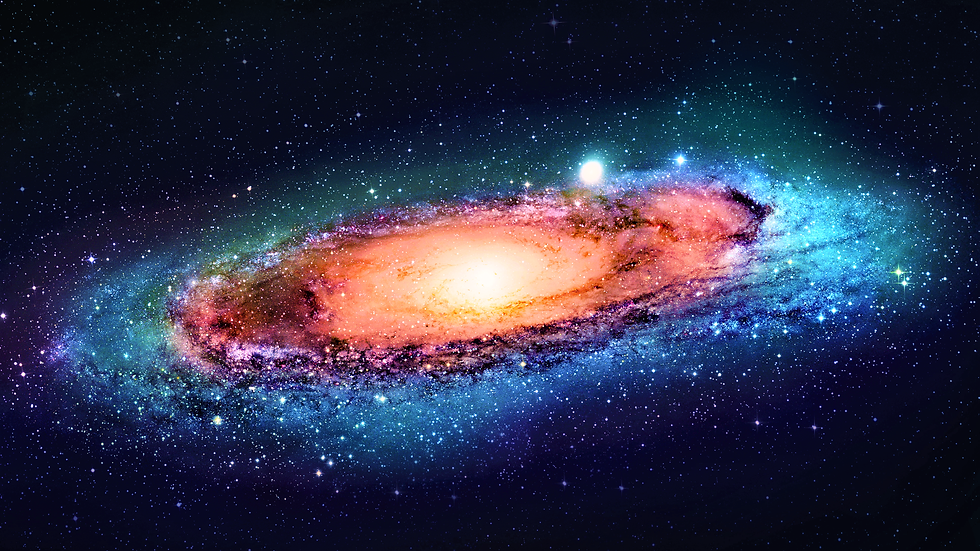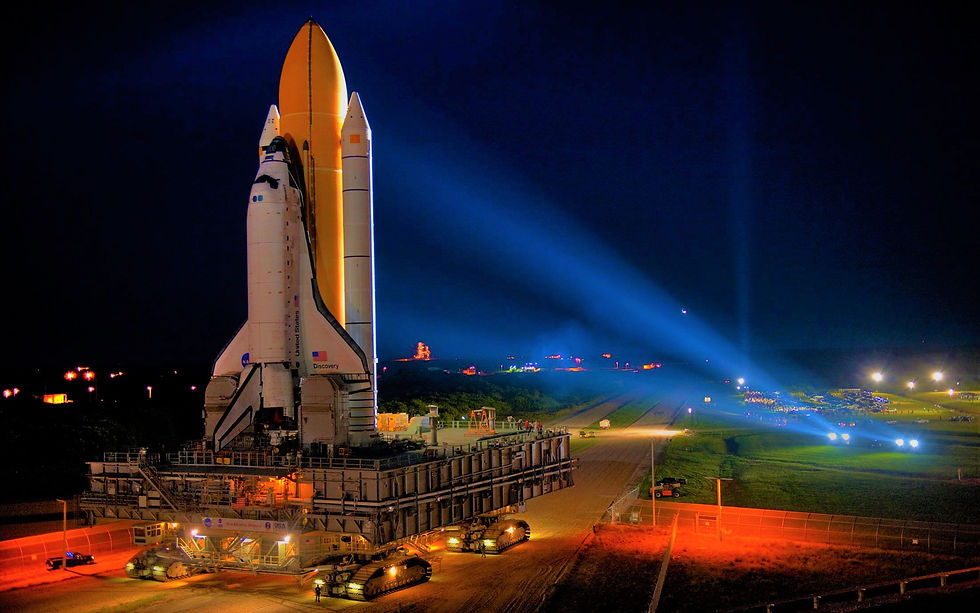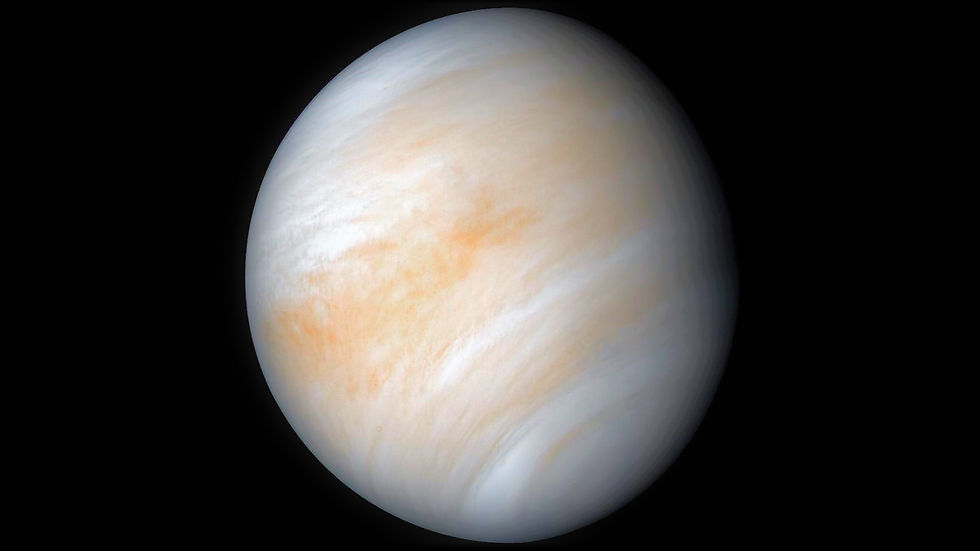Comet
- pilot55kassas55
- 14 فبراير 2023
- 6 دقيقة قراءة
A comet is an icy, small Solar System body that warms and begins to release gases when passing close to the Sun, a process called outgassing. This produces an extended, gravitationally unbound atmosphere or coma surrounding the nucleus, and sometimes a tail of gas and dust gas blown out from the coma. These phenomena are due to the effects of solar radiation and the outstreaming solar wind plasma acting upon the nucleus of the comet. Comet nuclei range from a few hundred meters to tens of kilometers across and are composed of loose collections of ice, dust, and small rocky particles. The coma may be up to 15 times Earth's diameter, while the tail may stretch beyond one astronomical unit. If sufficiently close and bright, a comet may be seen from Earth without the aid of a telescope and can subtend an arc of up to 30° (60 Moons) across the sky. Comets have been ob
served and recorded since ancient times by many cultures and religions.

Nucleus
The solid, core structure of a comet is known as the nucleus. Cometary nuclei are composed of an amalgamation of rock, dust, water ice, and frozen carbon dioxide, carbon monoxide, methane, and ammonia. As such, they are popularly described as "dirty snowballs" after Fred Whipple's model. Comets with a higher dust content have been called "icy dirtballs". The term "icy dirtballs" arose after observation of Comet 9P/Tempel 1 collision with an "impactor" probe sent by NASA Deep Impact mission in July 2005. Research conducted in 2014 suggests that comets are like "deep fried ice cream", in that their surfaces are formed of dense crystalline ice mixed with organic compounds, while the interior ice is colder and less dense.
Nucleus Surface
The surface of the nucleus is generally dry, dusty or rocky, suggesting that the ices are hidden beneath a surface crust several metres thick. The nuclei contains a variety of organic compounds, which may include methanol, hydrogen cyanide, formaldehyde, ethanol, ethane, and perhaps more complex molecules such as long-chain hydrocarbons and amino acids. In 2009, it was confirmed that the amino acid glycine had been found in the comet dust recovered by NASA's Stardust mission. In August 2011, a report, based on NASA studies of meteorites found on Earth, was published suggesting DNA and RNA components (adenine, guanine, and related organic molecules) may have been formed on asteroids and comets.
The outer surfaces of cometary nuclei have a very low albedo, making them among the least reflective objects found in the Solar System. The Giotto space probe found that the nucleus of Halley's Comet (1P/Halley) reflects about four percent of the light that falls on it, and Deep Space 1 discovered that Comet Borrelly's surface reflects less than 3.0% by comparison, asphalt reflects seven percent. The dark surface material of the nucleus may consist of complex organic compounds. Solar heating drives off lighter volatile compounds, leaving behind larger organic compounds that tend to be very dark, like tar or crude oil. The low reflectivity of cometary surfaces causes them to absorb the heat that drives their outgassing processes.

Coma
The coma is the nebulous envelope around the nucleus of a comet, formed when the comet passes close to the Sun on its highly elliptical orbit; as the comet warms, parts of it sublimate. This gives a comet a "fuzzy" appearance when viewed in telescopes and distinguishes it from stars.
The coma is generally made of ice and comet dust. Water composes up to 90% of the volatiles that outflow from the nucleus when the comet is within 3-4 AU of the Sun. The H2O parent molecule is destroyed primarily through photodissociation and to a much smaller extent photoionization. The solar wind plays a minor role in the destruction of water compared to photochemistry. Larger dust particles are left along the comet's orbital path while smaller particles are pushed away from the Sun into the comet's tail by light pressure.

Bow shock
Bow shocks form as a result of the interaction between the solar wind and the cometary ionosphere, which is created by the ionization of gases in the coma. As the comet approaches the Sun, increasing outgassing rates cause the coma to expand, and the sunlight ionizes gases in the coma. When the solar wind passes through this ion coma, the bow shock appears.

Comet tail
The tail consists of gas and dust that can extend hundreds of millions of kilometers away from the coma. Most comets actually have 2 tails: a plasma tail made of ionized gas, and a dust tail made of small solid particles. Comet tails point away from the Sun.
A comet tail—and coma—are features visible in comets when they are illuminated by the Sun and may become visible from Earth when a comet passes through the inner Solar System. As a comet approaches the inner Solar System, solar radiation causes the volatile materials within the comet to vaporize and stream out of the nucleus, carrying dust away with them. Separate tails are formed of dust and gases, becoming visible through different phenomena; the dust reflects sunlight directly and the gases glow from ionisation. Most comets are too faint to be visible without the aid of a telescope, but a few each decade become bright enough to be visible to the naked eye.
In the outer Solar System, comets remain frozen and are extremely difficult or impossible to detect from Earth due to their small size. Statistical detections of inactive comet nuclei in the Kuiper belt have been reported from the Hubble Space Telescope observations, but these detections have been questioned, and have not yet been independently confirmed. As a comet approaches the inner Solar System, solar radiation causes the volatile materials within the comet to vaporize and stream out of the nucleus, carrying dust away with them. The streams of dust and gas thus released form a huge, extremely tenuous atmosphere around the comet called the coma, and the force exerted on the coma by the Sun's radiation pressure and solar wind cause an enormous tail to form, which points away from the Sun.
Jets
Uneven heating can cause newly generated gases to break out of a weak spot on the surface of comet's nucleus, like a geyser. These streams of gas and dust can cause the nucleus to spin, and even split apart. In 2010 it was revealed dry ice (frozen carbon dioxide) can power jets of material flowing out of a comet nucleus. Infrared imaging of Hartley 2 shows such jets exiting and carrying with it dust grains into the coma.

Comet Orbit
Comets go around the Sun in a highly elliptical orbit. They can spend hundreds and thousands of years out in the depths of the solar system before they return to Sun at their perihelion. Like all orbiting bodies, comets follow Kepler's Laws - the closer they are to the Sun, the faster they move.
While a comet is at a great distance from the Sun, its exists as a dirty snowball several kilmoeters across. But as it comes closer to the Sun, the warming of its surface causes its materials to melt and vapourise producing the comet's characteristic tail. Comet tails can be as long as the distance between the Earth and the Sun.
Most comets are small Solar System bodies with elongated elliptical orbits that take them close to the Sun for a part of their orbit and then out into the further reaches of the Solar System for the remainder.Comets are often classified according to the length of their orbital periods: The longer the period the more elongated the ellipse.

parts of a comet
At the heart of every comet is a solid, frozen core called the nucleus. This ball of dust and ice is usually less than 10 miles (16 kilometers) across - about the size of a small town. When comets are out in the Kuiper Belt or Oort Cloud, scientists believe that's pretty much all there is to them - just frozen nuclei.
But when a comet gets close to the Sun, it starts heating up. Eventually, the ice begins to turn into gas. This can also cause jets of gas to burst out of the comet, bringing dust with it. The gas and dust create a huge, fuzzy cloud around the nucleus called the coma.

Where do comets come from?
Comets are mostly found way out in the solar system. Some exist in a wide disk beyond the orbit of Neptune called the Kuiper Belt. We call these short-period comets. They take less than 200 years to orbit the Sun.
Other comets live in the Oort Cloud, the sphere-shaped, outer edge of the solar system that is about 50 times farther away from the Sun than the Kuiper Belt. These are called long-period comets because they take much longer to orbit the Sun. The comet with the longest known orbit takes more than 250,000 years to make just one trip around the Sun.





تعليقات